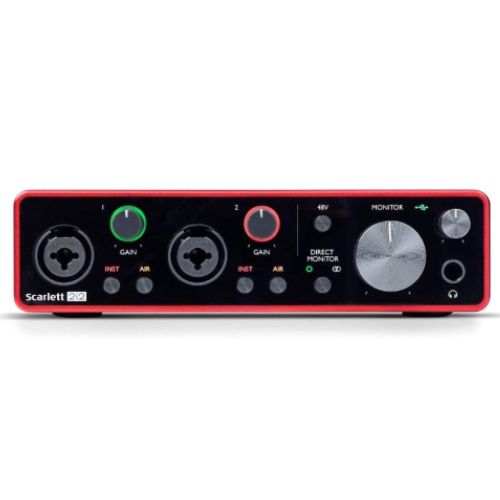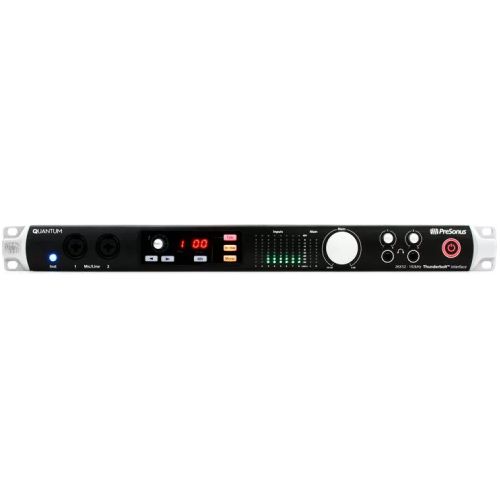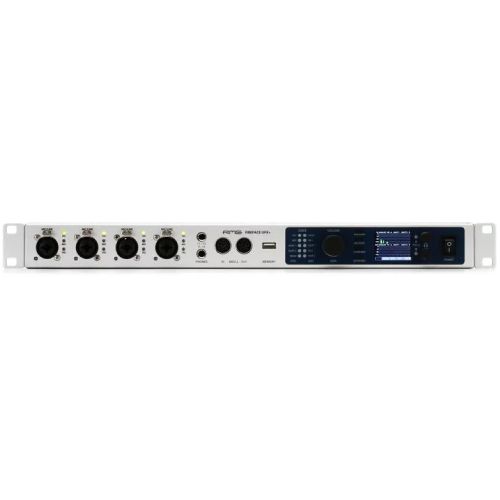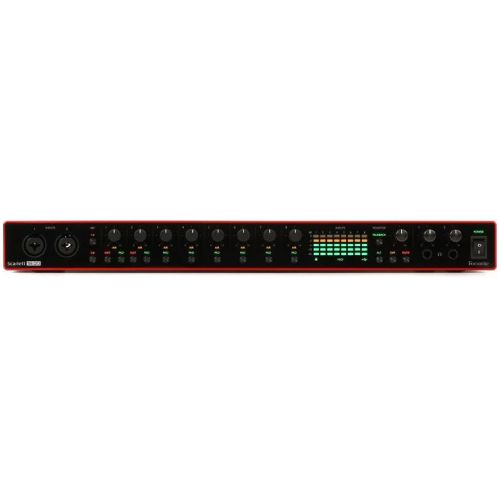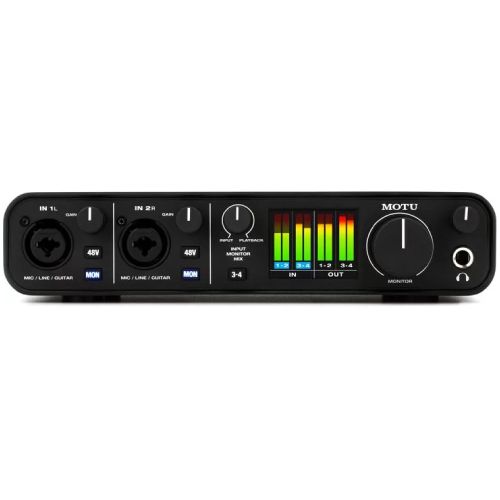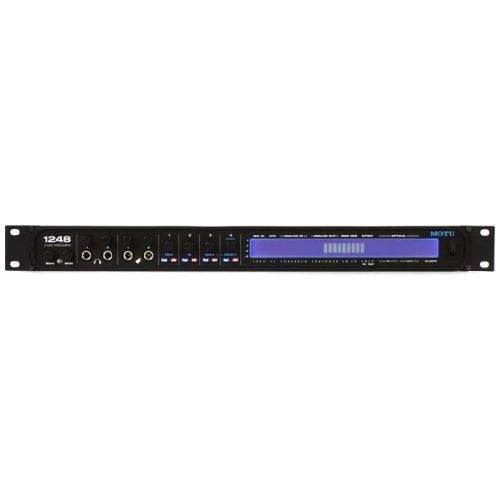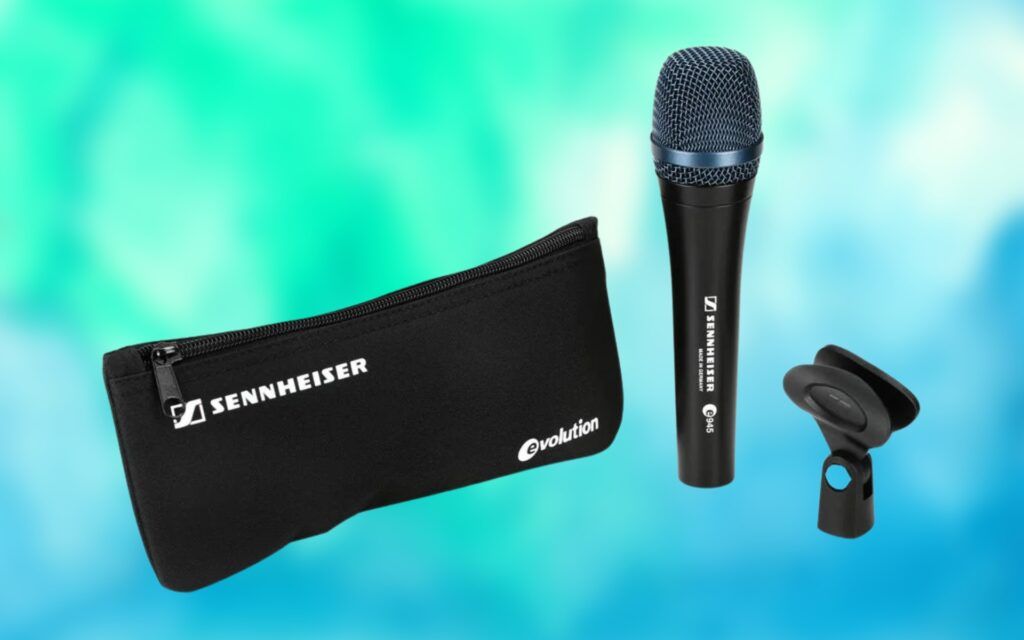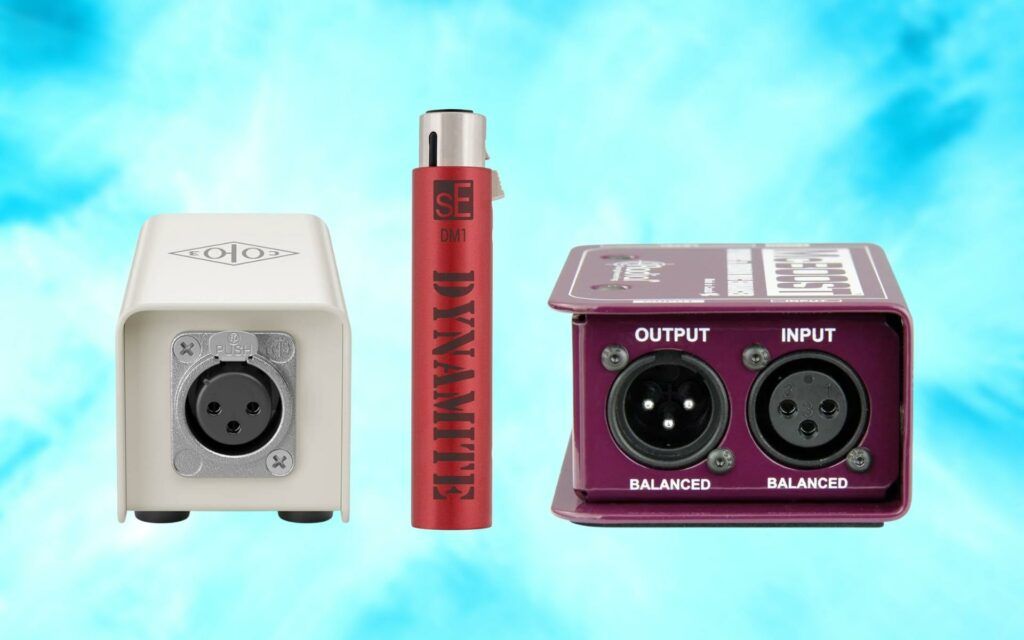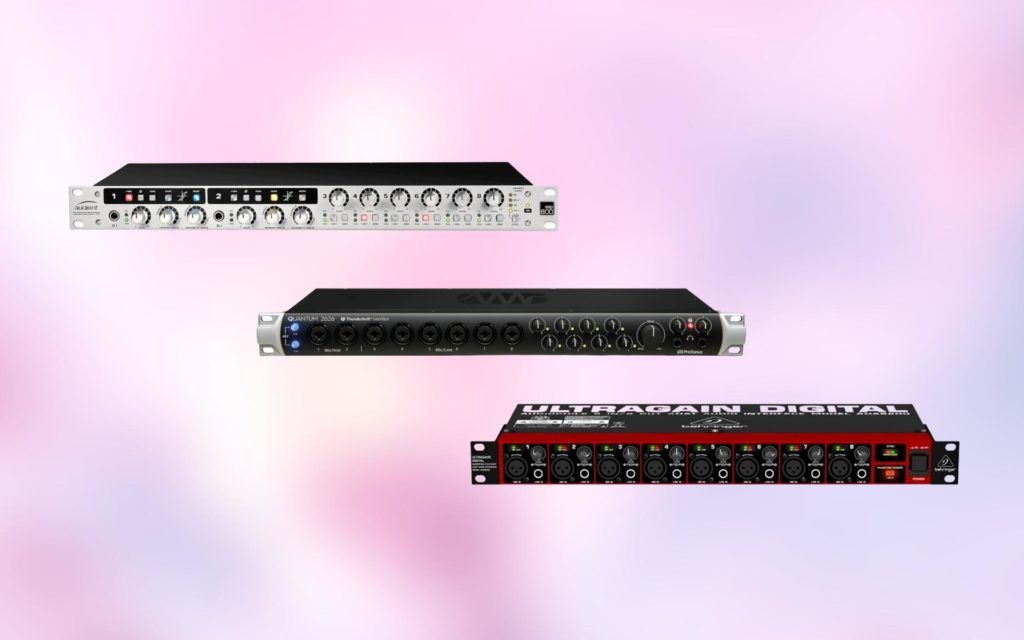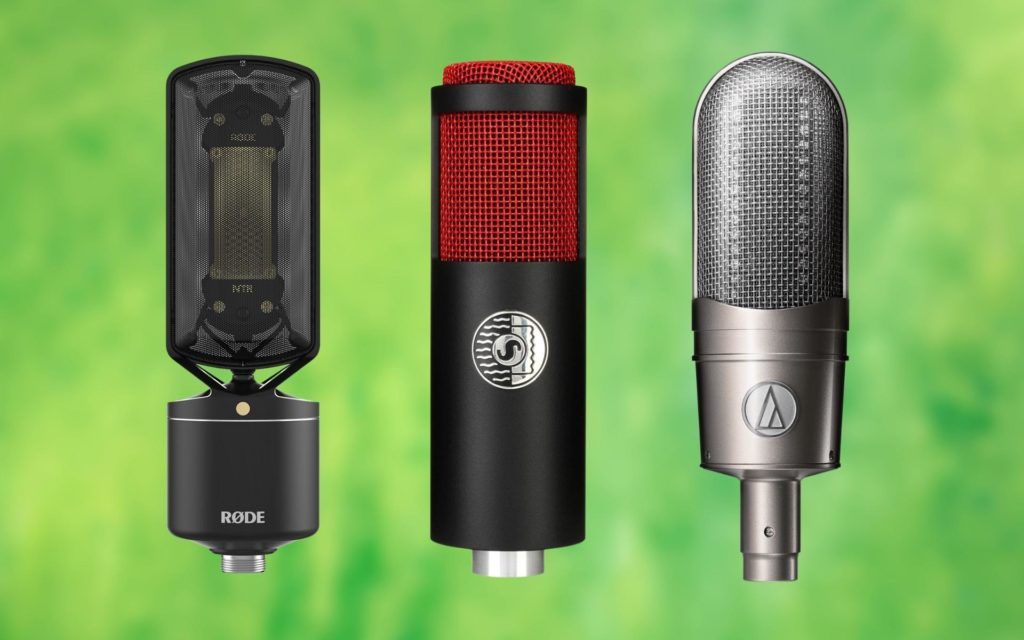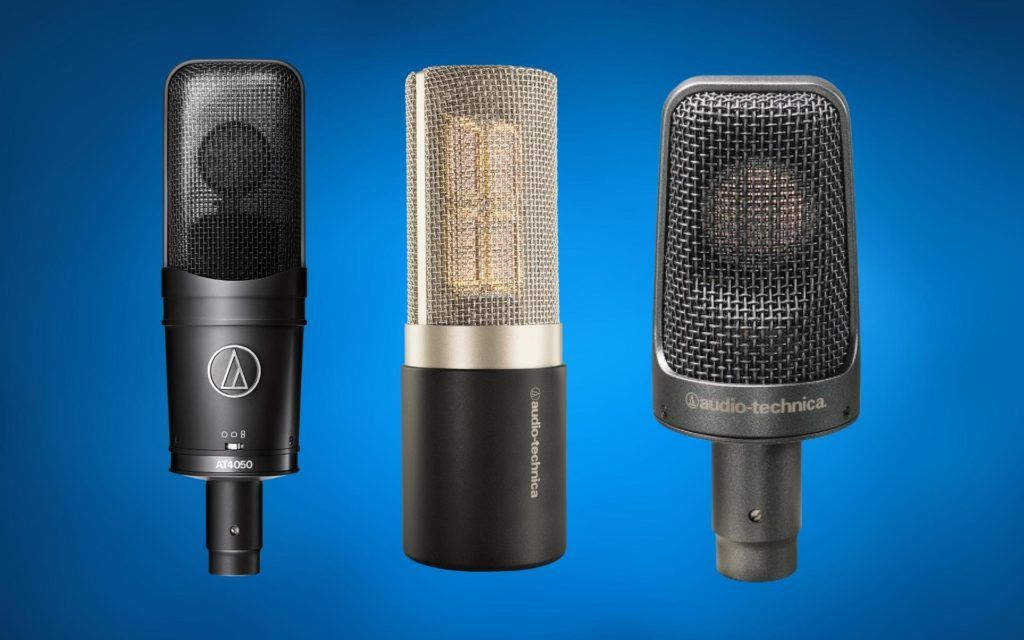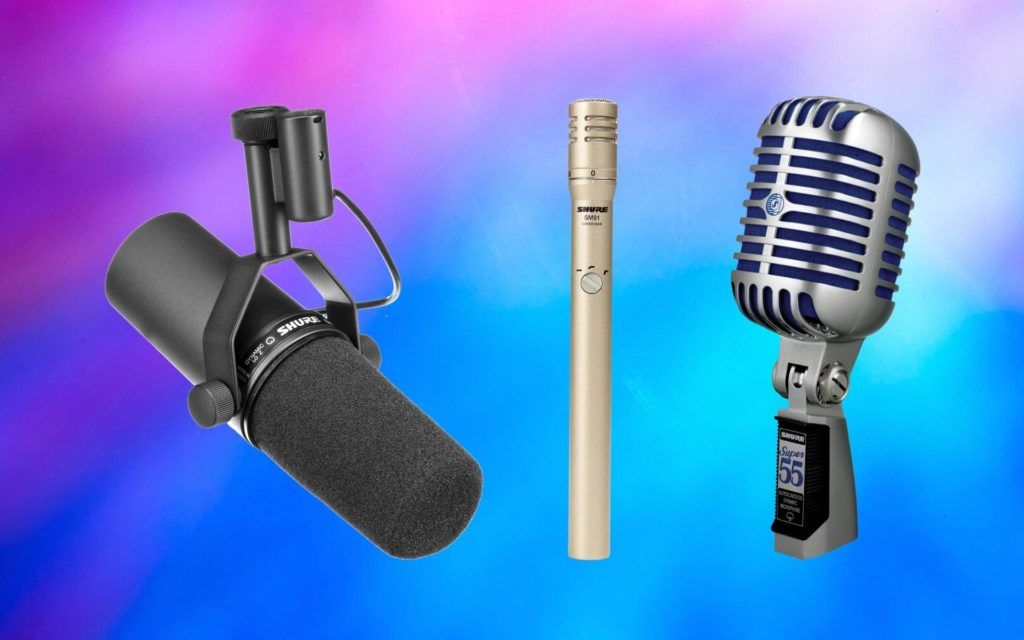We review products independently and our recommendations are genuine. If you purchase through links on our site, we may earn an affiliate commission. Learn More
Audio interfaces are arguably the most integral component in any home studio. Carrying out a range of functions, these devices are largely responsible for the accessibility of modern recording.
Some audio interfaces are better suited to certain operating systems, depending on the specifics of their connectivity, and other factors. The good news for Mac users is that there are many high-quality audio interfaces suited to Apple’s flagship operating system.
In this comprehensive guide, we’ll highlight the 6 best audio interfaces for Mac, with options to suit all needs and budgets.
What are the Best Audio Interfaces for Mac?
Mac Audio Interfaces Reviews
PreSonus Quantum 26/32 Thunderbolt 2 Audio Interface
| FEATURES | RATING | PRICE | |||
|---|---|---|---|---|---|
| FEATURES |
|
OUR RATING | PRICE |
|
PreSonus Quantum 26/32 Thunderbolt 2 Audio Interface Review
I’ve long been an admirer of PreSonus audio interfaces, mainly because they feature unique designs that make recording, monitoring, and playback simple. The PreSonus Quantum 26/32 is an extensive, reliable option that works perfectly with macOS.
Thunderbolt 2 connectivity is renowned for its almost non-existent latency, and overall efficiency.
Even when you load up an array of VST plugins in your chosen Mac-compatible DAW, and use the highest possible sample rates, this audio interface can carry the burden with no issues.
In addition to the selection of convenient controls and features installed on this PreSonus interface, it also includes eight high-end XMAX preamps and ten balanced outputs.
Furthermore, this can be expanded considerably by using the two ADAT lightpipe inputs, allowing you to connect a further 8 channels if required.
Pros
- Ultra-fast and reliable performance
- Can record large groups of musicians or other sound sources
- Extensive dynamic range
Cons
- Doesn’t include a mute switch or button
RME Fireface UFX+ USB 3.0 & Thunderbolt Audio Interface
| FEATURES | RATING | PRICE | |||
|---|---|---|---|---|---|
| FEATURES |
|
OUR RATING | PRICE |
|
RME Fireface UFX+ USB 3.0 & Thunderbolt Audio Interface Review
If you’re serious about getting the best possible recordings and production capabilities from your audio interface for Mac, in my opinion, the RME Fireface UFX+ is in a league of its own.
It is one of the priciest options featured in our guide, but anyone who experiences its impeccable performance will likely agree that the cost is justified.
With a total of 94 channels, including 4 pristine microphone and instrument preamps, 16 ADAT channels, and 64 MADI channels, the RME Fireface UFX+ can be used for any type of recording on a Mac, no matter how ambitious.
Reliable thunderbolt connectivity allows this interface to run smoothly. RME has improved the AD/DA converters from previous models in the range, which boosts the clarity and accuracy of the audio.
Finally, the onboard FX mixer makes it easy to adjust the dynamics of each channel, and add effects like reverb, EQ and delay in real-time.
Pros
- Incredibly clean and accurate recordings
- Onboard effects make it easy to mix audio
- Flawless operation and speed
Cons
- Possibly too complex and extensive for simple music production tasks
Focusrite Scarlett 2i2 3rd Gen USB Audio Interface
| FEATURES | RATING | PRICE | |||
|---|---|---|---|---|---|
| FEATURES |
|
OUR RATING | PRICE |
|
Focusrite Scarlett 2i2 3rd Gen USB Audio Interface Review
Over the past three decades or so, Focusrite has steadily built its reputation as an innovator in the field of recording equipment.
I’ve had the pleasure of using their legendary Scarlett interfaces on many occasions, and they never disappoint in terms of functionality and quality.
The Focusrite Scarlett 2i2 3rd Gen USB Audio Interface features some impressive improvements on previous models in the range. Most significantly, I was impressed by the upgraded mic preamps, which capture audio in a clean and detailed manner.
I’d highly recommend this USB interface to musicians or producers looking for an affordable hub for their home studio, without compromising on quality.
While it may not be capable of recording a full band simultaneously, at under $170 this Focusrite device is great value for money especially if you only intend to record a couple of sound sources at once.
Pros
- Captures instrument and mic audio with impressive clarity
- Plenty of headroom when recording
- Excellent option for beginners looking at getting started with music production
Cons
- Lacks the number of inputs needed to record a full band or drum kit
Focusrite Scarlett 18i20 3rd Gen USB Audio Interface
| FEATURES | RATING | PRICE | |||
|---|---|---|---|---|---|
| FEATURES |
|
OUR RATING | PRICE |
|
Focusrite Scarlett 18i20 3rd Gen USB Audio Interface Review
The 3rd generation Focusrite Scarlett 18i20 is one of the best audio interface for Mac users who need to record multiple sound sources simultaneously.
With a very reasonable price tag, this all-in-one recording and monitoring hub provides great value for money and in use it is very easy to operate.
One aspect of the Scarlett 18i20 that we were particularly impressed by is its visual display. With detailed LED meters for each of the eight channels, monitoring the levels as you record is made very simple indeed.
The onboard Air feature allows you to instantly increase the high-end frequencies of your recordings, which is useful if you’re capturing everything from bass guitar to vocals.
Eight high-end Focusrite preamps facilitate the open-sounding recording of microphones and instruments, with an abundance of headroom and minimal latency.
Pros
- Ideal for recording full bands or other ensembles
- The LED display makes real-time adjustments easy
- Intuitive design for easy operation
Cons
- “Mix control” feature may take a while to become accustomed to
MOTU M4 4x4 USB-C Audio Interface
| FEATURES | RATING | PRICE | |||
|---|---|---|---|---|---|
| FEATURES |
|
OUR RATING | PRICE |
|
MOTU M4 4x4 USB-C Audio Interface Review
The next audio interface for Mac I’d like to bring to your attention is the affordable M4 by MOTU. This is a perfect option for Mac users who don’t have a Thunderbolt port on their computer or Macbook, as it uses USB-C connectivity.
MOTU has generously included an array of useful recording and production features on this compact interface. Firstly, it boasts a dynamic range of 120dB, which is coupled with optimally-designed drivers for low-latency performance and pristine recording clarity.
An additional capability of this MOTU audio interface that is worth noting is its loopback function. If you like to live stream the process of making music, this feature is essential.
To further enhance the smoothness of the M4’s performance, MOTU has included hardware monitoring, which can be used to route all of the inputs to the analog outputs, ensuring zero latency.
Pros
- Affordable audio interface for recording and music production
- Facilitates live streaming and podcasting
- Clear and detailed audio capturing
Cons
- Lacks the inputs required to record drum kits and groups of musicians
MOTU 1248 32x34 Thunderbolt/USB 2.0 Audio Interface
| FEATURES | RATING | PRICE | |||
|---|---|---|---|---|---|
| FEATURES |
|
OUR RATING | PRICE |
|
MOTU 1248 32x34 Thunderbolt/USB 2.0 Audio Interface Review
To conclude our list of the best audio interfaces for Mac, we have the sophisticated MOTU 1248. This thunderbolt and USB-compatible device is in my opinion one the perfect example of MOTU’s expertise and attention to detail.
With an extensive selection of 32 inputs and 34 outputs, 1248 can record even the largest number of sound sources at the same time when paired with a mixer. What’s more impressive, is that it does so without falling victim to latency issues.
A feature that I found very impressive when analyzing this Mac-friendly audio interface was its onboard mixer.
Powered by DSP, this tool makes it easy to route channels, adjust levels, and tweak the sound of your recordings using built-in compression, EQ, reverb, and noise gates.
Finally, the four mic preamps sound incredibly transparent whether you’re using a condenser, dynamic, or ribbon microphone.
Pros
- Ideally suited to recording groups of musicians or vocalists simultaneously
- Super transparent and clean recordings
- Versatile connectivity options
Cons
- The hardware and controls lack the quality of other high-end audio interfaces
Audio Interface for Mac Buyer’s Guide
The importance of choosing the best audio interface for Mac recording setups can’t be overstated. No matter how good your microphones, instruments, cables, and other equipment are, they will not perform to their fullest potential without being paired with a capable interface.
Cost is not always indicative of quality when discussing these vital recording devices. It’s important to establish your needs before purchasing an audio interface so that you can use it to carry out all of the tasks you require without needing to reinvest as your home studio expands in the future.
USB vs. Firewire vs. Thunderbolt
Mac users have three main connectivity options when choosing their audio interface. USB, Firewire, and Thunderbolt each have different advantages and drawbacks, so it’s important to have an idea of how they affect the performance of the device.
Most modern audio interfaces for Mac like the RME Fireface UFX+ that are USB compatible will use USB 3.0. This type of connection is fairly reliable, and one of its most prominent advantages is that it increases the amount of current that can be delegated to bus-powered hardware devices.
However, a USB audio interface for Mac can fall victim to latency especially when used with less powerful Mac devices.
Firewire is commonly included on Mac computers or Macbooks. This connection type commonly boasts lower latency than USB, because it processes data with improved stability. Due to the reliability of Firewire, it is commonly used in larger, professional recording studios.
The third and final connection type that Mac audio interfaces use is Thunderbolt like the MOTU 1248 32×34 Thunderbolt and the PreSonus Quantum 26/32 Thunderbolt 2 Audio Interface.
Closely associated with Apple devices, Thunderbolt 2 is known to improve the sonic performance of audio interfaces and minimize latency effectively. It can also improve the performance of older Firewire audio interfaces, which can often be connected via an adaptor.
Inputs & Outputs
Before you commit to a specific Mac computer or Macbook Pro audio interface, it’s a good idea to figure out exactly how many inputs and outputs you’ll need to satisfy your recording and monitoring needs.
Affordable audio interfaces for Mac such as the MOTU M4 4×4 USB-C Audio Interface and Focusrite Scarlett 2i2 3rd Gen USB Audio Interface will likely include two or four inputs and outputs. While this is adequate for most music production tasks and recording limited numbers of mics or instruments, if you want to record full bands or drum kits, for example, you’ll need to opt for an interface like the Focusrite Scarlett 18i20 which has a more extensive i/o setup.
Mic Preamps
The quality of the recordings that you capture onto your Mac is directly linked to the preamps installed on the interface’s inputs. Preamplifiers are responsible for shaping the audio as it enters the interface, and impact the color, tone, and dynamics of the recordings.
If you choose an interface with sub-par microphone preamps, this will likely limit the clarity that you can achieve, no matter how skilled you are in post-production.
Thankfully, all of the Mac audio interfaces we’ve listed have stellar preamps fitted on their inputs to ensure maximum quality.



